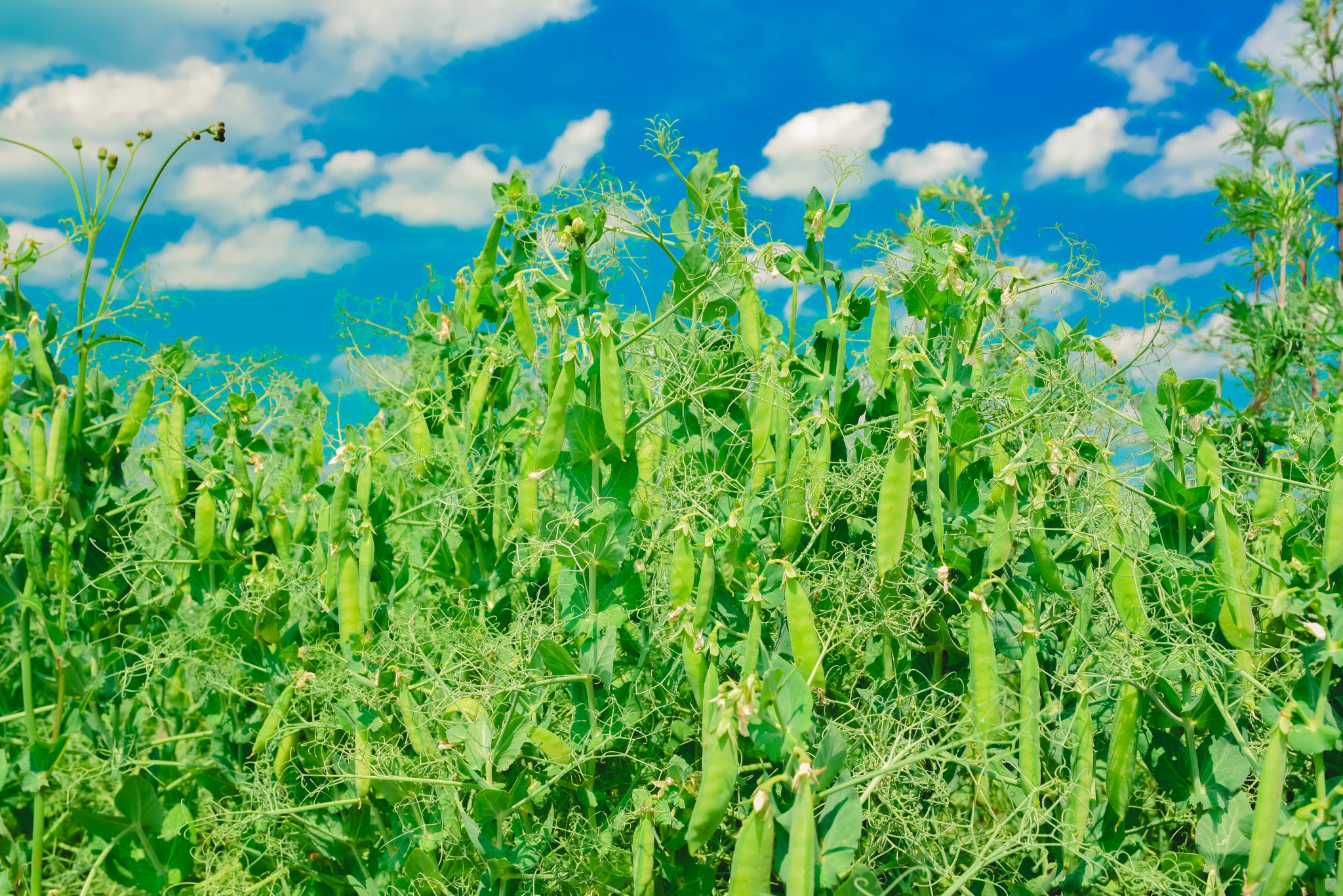Protein and other nutrient composition of crops are primary determinants of how they can be used after harvest. Currently, plant proteins in the UK for food applications are mainly derived from imported crops such as soybean and peas. The market is shifting away from soybean due to deforestation and allergy concerns, and UK pea protein production remains low (4% arable land) due to perceptions of high-risk, low-yield and unprofitability.
Although soybean holds a major market share of 56.37% in the market, the rapid escalation of peas and other legume proteins is driving the industry toward a new source, which requires a higher volume of production (Mordor Intelligence, 2020).
Role of innovation
Innovation is key to meet the growing demands for plant-based food production. Existing plant protein sources cannot fulfil the required volumes, especially if grown using traditional practices.
Regenerative agriculture, the better use of resources, the use of biologicals and the use of controlled growing environment are all working with existing technologies to boost crop yield and quality, as well as to allow new or underutilised plant species to enter the plant protein supply chain.
Alongside up-scaling and an increased uptake of new technologies in crop production, new innovations are needed to include waste materials, by-products and feedstocks in the plant protein supply.
Are Legume crops the answer to future sustainability?
Growing legumes supports sustainable agriculture due to their excellent capacity for fixing nitrogen, relatively low water usage and short life cycle.
Legume species are high-yield rotation crops that support regenerative agriculture not only though this nitrogen fixation, but also through stimulating microbial activity in the soil and by making insoluble phosphorus soluble. In combination, these properties lead to improvements in soil organic matter, porosity and field capacity (Mekkei, 2014).
The plantation of legumes enhances biodiversity, as cover crops (plants grown to protect or improve the soil between crop growing periods) or intercrops (different crop species grown simultaneously in the same field during a growing season) are frequently grown in fields primarily used for cereals.
In addition, the application of carbon taxes in Europe has increased the relative value of legume-supported systems for UK farmers.
Growing legumes, therefore has several benefits – both in terms of soil health and protein yields – for food and feed uses. In turn, these support innovations designed to tackle food security (National Food Strategy, Agriculture Bill 2019-20) and climate change, providing additional incentives (Grow Legumes in Grassland) for growers to explore and adopt new technologies and collaborate with adjacent sectors such as the food industry.
Pea proteins: widely used in plant-based diet
Peas (Pisum sativum) contain 20-30% proteins, 15-25% dietary fibre and 1-2% fat. The dietary fibre of peas (14-26%) is beneficial for a healthy diet but often ends up as waste product after the protein content is extracted. Peas are also rich in vitamins (folate) and minerals, especially potassium, zinc and calcium. Peas can accumulate high amounts of selenium (Se) and are therefore a potentially beneficial crop for Se deficient areas, including most of the UK.
The protein content of a pea protein extract can be as high as 80%, while the amino acid profile of pea proteins is typical for legumes: high in lysin content but lacking methionine and cysteine. This means they are complementary to cereals, as diets including both provide the essential amino acids requirement by human health. Although there has been more sequencing carried out for pea proteins than for other pulse proteins, there is still space for further research.
The strong taste profile of peas provides a constant challenge for food product developers, but despite this, their functional properties (texture and solubility) allow a wide range of applications. Pea or extracted pea proteins are used as meat replacement and meat extenders in bakery products, beverages, sports nutrition and dietary supplements.
Growing market
The pea protein market is forecast to grow with a compound annual growth rate (CAGR) of 23% by 2025 to be worth of £144m (Allied Market Research report). Pea protein uptake in the UK is the largest in Europe and second largest in the world, and shows the fastest growth rate for the coming years.
The UK is currently reliant on China and Canada for its supply of pea protein, however the UK climate is well-suited to growing peas in fields, so the supply chain may change to the favour of the UK farmers.
If you missed the previous blog on this subject, you can read it here. Next time we will look in depth at two unusual – or under-utilised – legume crops. For more on CHAP’s work in this area go to Seeking Future Proteins.
If you have any questions about working with CHAP, please send us an email using the enquiries form at the bottom of our homepage.
Please note, the opinions expressed in this article are the author’s own and do not necessarily reflect the views or opinions of CHAP.












